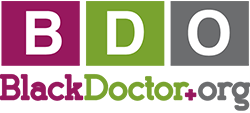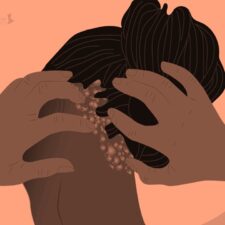
Living with a chronic illness often means navigating a delicate balance between acknowledging its impact and recognizing that it does not define you. Overidentification—sometimes referred to as engulfment—happens when your self-concept becomes overwhelmingly defined by your diagnosis. It’s the difference between saying, “I have diabetes” and “I am diabetic.” While the former is factual and neutral, the latter carries emotional weight that can sneakily limit your identity.
What Is Overidentification or Engulfment?
In 2018, Oris and colleagues introduced a model of four illness-identity states: rejection, engulfment, acceptance, and enrichment.
- Rejection involves denying or minimizing the illness, leading to poor self-care.
- Engulfment is when illness dominates every aspect of life, draining energy, joy, and possibility.
- Acceptance integrates illness into life without making it everything.
- Enrichment is when the illness generates growth, purpose, or renewed perspective.
Psychology Today calls engulfment a kind of identity foreclosure, where the illness becomes a substitute for a fuller, richer self.
Symptoms of engulfment include:
- Defining all plans or options through the lens of symptoms or limitations.
- Withdrawing from activities or relationships due to fear of symptom unpredictability.
- Sacrificing personal interests, goals, or self-expression because illness feels overwhelming.
RELATED: 7 Early Warning Signs That You Could Have Chronic Illness

The Possible Harm in Overidentifying with a Diagnosis
Overidentification may arise from understandable roots: loss, uncertainty, and medical trauma. But it carries real costs:
- Fixed Mindset and Ceiling on Growth
When your illness defines you, you might believe, “This is as good as it gets.” This leads to internal stagnation—resilience diminishes because you expect nothing else. - Heightened Anxiety & Depression
Studies show engulfment correlates with increased depression, lower self-esteem, and reduced quality of life in conditions like multiple sclerosis. - Self-Stigma and Social Withdrawal
If you believe you’re “broken,” you may avoid social or professional opportunities, isolating yourself and reinforcing the illness identity. - Missed Opportunities
Over-identification often generates fear about what might happen, not what is happening now. This fear leads to avoidance—even when there’s room to try. One rheumatoid arthritis patient described avoiding travel for fear of pain, despite being physically stable. Once she shifted to a “try and see” mindset, she reclaimed experiences. - Diagnostic Overshadowing
Focusing so heavily on one illness may cause you or providers to overlook new symptoms, attributing everything to the existing condition, delaying detection of co-occurring health issues.
Failing the Textbook Expectations
A diagnosis may come with assumed progressions and treatment trajectories. But real life often defies “textbook” models. One rheumatoid arthritis patient shared that although she had a “classic” presentation, she couldn’t tolerate standard medications.
When your illness identity hinges on a standard script, diverging from expectation can trigger self-doubt: Why can’t I follow this roadmap? What’s wrong with me? But in reality, individual bodies respond differently, and that’s normal. Overidentifying exaggerates the difference into failure, stigmatizing the self rather than acknowledging uniqueness.
Missing Out on Opportunities Through Fear
Fear of “what if” is a hallmark of engulfment. Concerns about potential pain, flare-ups, or complications creep in, sabotaging chances to travel, learn, or fight for dreams. One patient noted that fears about joint replacements initially held her back, but by adopting a pragmatic “try and see” approach, she reconnected with life.
Strategies to combat fear-driven avoidance:
- Plan ahead: pack symptom relief tools, modify itineraries, and identify nearby clinics.
- Start small: test a short trip, a single social event, or light exercise.
- Reframe fear: treat each outing as an experiment, not a guarantee.
RELATED: 9 Important Differences Between Acute & Chronic Illness

The Struggle To Not Overidentify On a High Pain Day
On good days, it’s easy to feel separate from illness. You remember your pre-illness self and engage fully with life. But on high-pain days, the question resurfaces: Is this all I am now? The symptom severity filters perception, making the illness the only lens.
That’s exactly when accepting temporary engulfment without internalizing it becomes vital:
- Acknowledge—“Today is hard. Pain is loud.”
- Reaffirm—“But the day will pass. Pain doesn’t define me.”
- Use coping tools: mindfulness, paced activity, expressive journaling, or therapy.
Illness identity is fluid. You can drift toward engulfment on difficult days, then return to acceptance and even enrichment the next.
More Than the Chronic Illness
Embrace the Four States: Acceptance and Enrichment
- Rejection and engulfment are two extremes—disharmony and dominance.
- Acceptance acknowledges limitations while protecting joy and relationships. It’s the healthiest baseline.
- Enrichment transforms illness into fuel for growth: empathy, purpose, advocacy, creativity.
Research shows that enrichment leads to improved psychological well-being and a more resilient identity.
Practical Strategies to Loosen the Grip of Overidentification
- Narrative Shifting
Reframe your story so that your chronic illness is a part of your life, not the whole of it. Try changing the language you use—say, “I’m living with this illness” instead of “I am this illness.” Include both your challenges and your growth in your story. This helps reclaim your identity from the diagnosis and reminds you that you are still evolving. - Engage in Flow Activities
Do things that fully absorb your attention—what psychologists call “flow” states. These might include cooking, writing, gaming, painting, building, or playing music. These activities help you reconnect with passions and skills that have nothing to do with your illness. They remind you that you are still capable of joy, focus, and creativity. - Find Community Support
Join support groups or social spaces where people talk about chronic illness, but don’t let it define them. Seeing others live with pain or limitations and still pursue love, humor, goals, and joy can help reshape your own mindset. Representation and connection can be powerful mirrors. - Learn Through Psychoeducation
Educate yourself about how your illness affects your body, mind, and emotions. Understanding the science behind symptoms (like why flare-ups happen or how pain rewires the brain) helps you externalize the illness. It creates space between you and what’s happening to you, so you stop internalizing it as your entire identity. - Seek Therapy or Mental Health Support
Work with a therapist who understands chronic illness and identity work. Approaches like Cognitive Behavioral Therapy (CBT), Acceptance and Commitment Therapy (ACT), or Narrative Therapy can help untangle your self-worth from your health status. Therapy provides tools for managing grief, fear, identity shifts, and redefining life on new terms.
Each of these strategies can be adapted to your unique situation. You don’t need to master all of them—just taking a step or two can help you move toward a more balanced, empowered self.
Honoring High-Pain Days
On painful days:
- Normalize the experience—you’re not failing; illness fluctuates.
- Manage intensity—use meds, pacing, rest, grounding exercises.
- Temporary identity shift—revert to acceptance once the day passes.
- Look for tiny wins—even drinking tea mindfully is a reminder of your personhood.
Overidentification with illness is a common—and understandable—trap. But it’s neither necessary nor inevitable. You can:
- Recognize engulfment without letting it own you.
- Walk with acceptance even when illness humbles you.
- Grow through adversity to find enrichment.
Your chronic illness is part of your life, but it’s not all of you. You have dreams, joys, relationships, skills, and inner richness that the diagnosis can’t touch.








